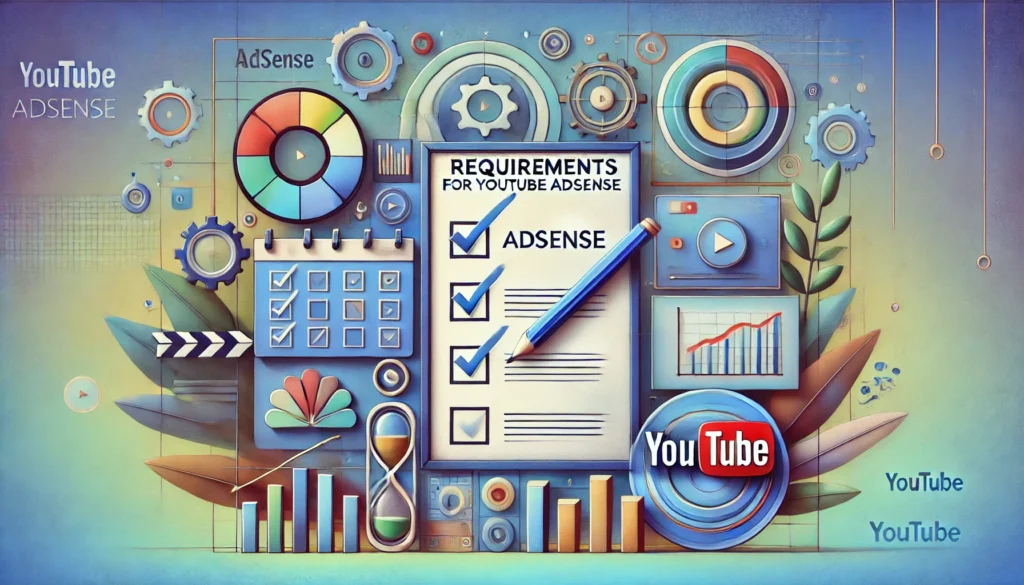
Approval for YouTube AdSense is one of the important milestones in the journey of starting a YouTube career and turning your passion into a lucrative business. It opens the door to monetizing your content and generating revenue from your videos. However, for many content creators, AdSense approval process should seem scary for its strict criteria and detailed review of applications. This article aims to demystify the process by providing you with a detailed roadmap that shall increase your chances of getting YouTube AdSense approval.
Understanding YouTube AdSense
AdSense for YouTube is a free program allows YouTube creators to earn money. It works by displaying ads before, during, or after their videos. AdSense Creators must be part of the YouTube Partner Program. It’s created to help YouTube creators monetize their channel content.
Advertisers compete for space to showcase their promotional content in videos. Content creator who produces YouTube content receives a share of the revenue generated from these placements.
Requirements for YouTube AdSense
Understanding requirements for YouTube AdSense is crucial for creators aiming to monetize their content. YouTube sets specific standards that every channel must meet before being considered for AdSense approval. These standards ensure that the content is suitable for advertising and that the channel has a sufficiently engaged audience.

One of the crucial requirements is minimum subscriber and watch hour thresholds. A channel must have at least 1,000 subscribers. This requirement is in place to ensure that the channel has a basic level of community interest and audience engagement. Additionally, the channel must have amassed over 4,000 watch hours in the previous 12 months. This metric approves that the content is not only attracting viewers but also keeping them engaged for significant periods. These aspects collectively act as a preliminary filter to gauge a channel’s viability for monetization.
It is also very important to follow YouTube’s monetization policies. These policies are designed to maintain a safe and fair environment for creators, viewers and advertisers. They include broad content guidelines, including but not limited to restrictions on copyrighted material, hate speech, and misleading content. Non-compliance will not only result in AdSense application rejection, but may also result in channel warnings or removal.
Having a Google AdSense account associated with the YouTube channel is another important requirement. It is important for creators to ensure that all information is accurate and up-to-date. This avoids any delay in payments once the channel starts generating revenue.
Common AdSense Mistakes to Avoid
Gaining approval for YouTube AdSense is a significant milestone for any content creator. However, the path to approval can not without its challenges. Many creators find their initial applications rejected for various reasons. You can learn understanding these common pitfalls and knowing how to address them can increase likelihood of approval upon reapplication.

- Clicking on your own Ads
As a beginner, people think that the more clicks they get the more income it will generate. Most of the beginners start doing invalid activities on their ads to increase their Google Adsense Earning, for example: clicking on their own ads; asking their friends or colleagues to click on their ads; using software to click on ads. This can only disable your AdSense Account. Google is smart to aware of all such invalid activities. So stop clicking on your own ads if you want to make reliable money from AdSense. - Using Violated Niche
Your blog should be niche or use copyrighted items or promoting piracy. In this case, you may get an Adsense warning, and if you ignore warning, your account will be banned. To avoid you should read our other article, Best Niches for Youtube. - Adsense on pop-ups
Never use AdSense ad code on pop-ups to improve your Google Adsense Earning. Otherwise, Google Adsense will ban your account. - Multiple Adsense Account on the Same name
A person can have only 1 Adsense Account according to Google Adsense Privacy Policy. If the person has more than 1 Adsense account, then Google Adsense will ban both accounts. So, you have to use different Names, Email Addresses, Phone Number, Address on Every Adsense Account. - Using Adsense on Unsupported Language Blog
Google AdSense supports some languages. If your website shows content related to one of the non-supported languages, Google will likely not approve your AdSense request. - Stop placing too many ads
AdSense asks publishers to place not more than five ad units on a single web page. However, some publishers add even more than five to earn more revenue, which leads to failure. - Stop producing duplicate contents
Displaying illegal activity, selling pirated content and downloading links for malicious software are also not allowed by AdSense.
Conclusion
It can be difficult to navigate the YouTube AdSense approval process. However, the secret to overcoming failures and achieving success is knowing the typical reasons for rejection and how to properly address them. Creators can greatly increase their chances of approval by carefully following YouTube’s content restrictions. Then, making sure all application materials are accurate and complete, and concentrating on creating original, high-quality video. It’s critical to see any early rejections as chances for development and progress. Not as the definitive judgments. After making the required changes, creators should wait patiently for the perfect time to resubmit. Successful career in video creation can be achieved by following the path to YouTube channel monetization through AdSense.
[…] policies, you are able to apply. You must be 18 years or older. You can also take a look at “How to Get AdSense Approval” to avoid problems about getting approval. Once approved, you can set up adverts to show on your […]